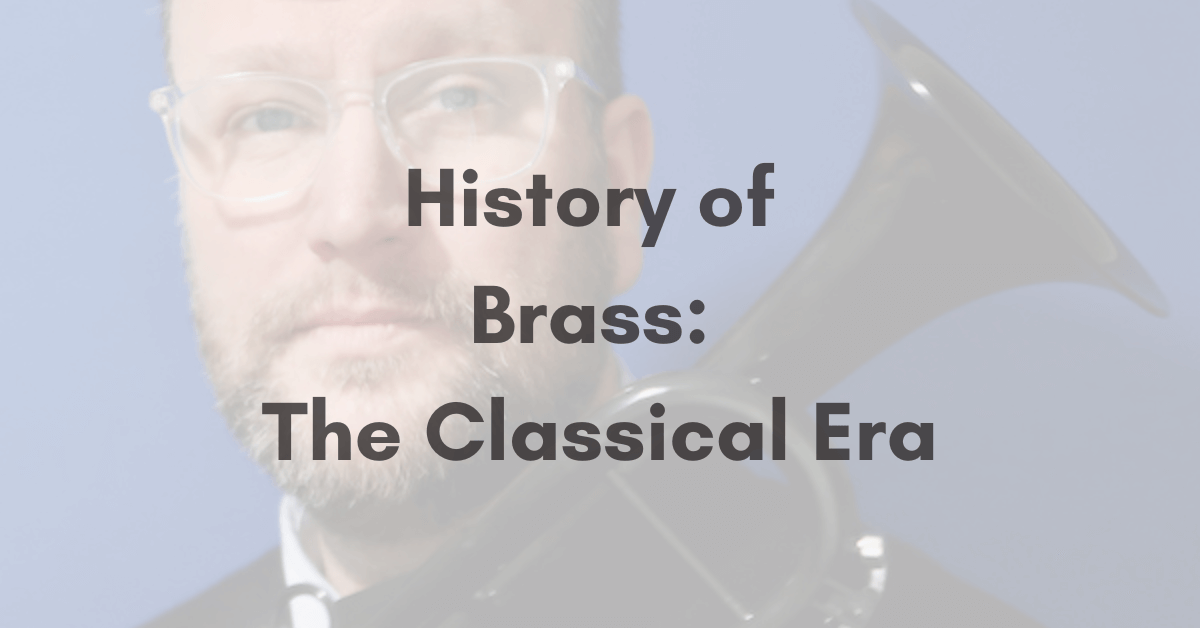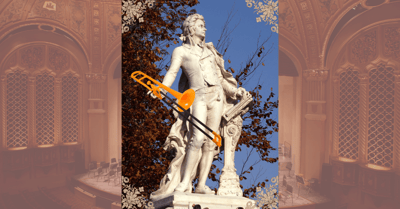
Topics:
December 11th, 2023
2 min read

Welcome to the grand finale of A Brassy History with Grant Golding! As we glide into the Classical period (1730-1820), we find ourselves in an era of significant change. This relatively brief period saw monumental shifts in music, culture, and technology. Trumpet players, once the rock stars of the Baroque era, adapted to new roles, while trombones made a dramatic comeback.
The Haydn Trumpet Concerto: a landmark composition

Classically quirky cuisine and fashion
Remember the Baroque wigs styled with pig fat? The Classical period had its own quirks. Fashion remained elaborate, but now with the added challenge of containing lice. Culinary habits also evolved, with meat, game, and fish remaining staples for the wealthy, while the less affluent turned to porridges, stews, and the ever-popular 'piece.'
Brass instruments during this time saw a return to simpler roles, with fanfares and military-style music dominating. The art of trumpet playing evolved from the flashy techniques of the Baroque period to more structured, symphonic contributions. Trombones, too, found their place in orchestras, often symbolizing the supernatural in Mozart's compositions.
Our journey concludes with Beethoven's Ninth Symphony and its iconic Ode to Joy. This piece, a testament to Beethoven's genius, was composed when he was nearly deaf. The story of its premiere, where Beethoven couldn't hear the audience's rapturous applause, is a poignant reminder of the power of music to transcend personal struggles.
Now that we know the story about Classical music, let's hear it from Grant, and the full video episode of A Brassy History:
Classical brass and goodbye to A Brassy History
As we bid adieu to the Classical period, we reflect on how brass instruments not only adapted to the changing musical landscape but also helped shape it. From fanfares to symphonies, the versatility and resilience of brass instruments are evident. Their evolution mirrors the broader cultural shifts of their time, making them not just instruments, but storytellers of history.
Adam is the Content Manager at pBone Music. This should mean that he’s the ideal person to write about himself, but he finds boasting in the third person a little awkward. He honed his word wizardry with a degree in English Language and Literature at the University of Leeds. He has since written copy for clients and businesses across the land, from awards to something beginning with “z”. He also spent a number of years as a musician. He has written pop songs and even jingles for kids, performed more first dances at weddings than you could shake a pBuzz at, and once played a gig for a pie company at The Etihad Stadium in Manchester. When he’s not reminiscing about those good old days, you might find Adam enjoying the football (although as an Everton fan, that can be difficult). He also loves spending time with his partner, Jen, and his family and friends, and sincerely hopes they feel the same way.
Topics: